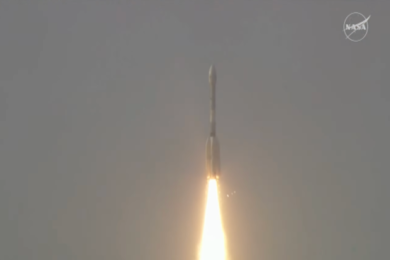On July 30, 2025, NASA and the Indian Space Research Organisation (ISRO) successfully launched the NASA-ISRO Synthetic Aperture Radar (NISAR) satellite from the Satish Dhawan Space Centre in southern India. The Earth-observing satellite lifted off aboard ISRO’s Geosynchronous Satellite Launch Vehicle Mark II (GSLV Mk II) at 5:30 p.m. IST (8 a.m. EDT), beginning a mission designed to monitor Earth’s changing surface with unprecedented detail.
Shortly after launch, NISAR made contact with ground controllers in Bengaluru, confirming that it was receiving commands and functioning as expected. Over the coming weeks, engineers will conduct a series of checks to calibrate the spacecraft’s systems before deploying its 12-meter radar antenna reflector. Science operations are scheduled to begin in approximately four months.
NISAR will systematically map Earth’s surface using advanced radar systems, collecting data both day and night, and through clouds or weather disturbances. The satellite carries two radar systems: an L-band radar provided by NASA and an S-band radar from ISRO. This combination will allow scientists to detect subtle movements on Earth's surface, such as ground shifts caused by earthquakes, glacier flows, and land subsidence. It will also contribute to the monitoring of forests, wetlands, and agricultural areas.
The satellite is expected to observe nearly all of Earth's land and ice-covered regions twice every 12 days. This data will support hazard monitoring, climate research, and natural resource management, offering insights that are essential for improving disaster preparedness and resilience.
NISAR is the first radar mission to operate with two distinct frequencies capable of detecting changes to Earth’s surface at the scale of less than one centimeter. The mission’s data will be openly available and is designed to serve communities, researchers, and decision-makers around the world.
By providing timely and high-resolution data, NISAR is expected to make a significant contribution to global efforts aimed at understanding environmental changes and reducing disaster risks.
Image credit: NASA, ISRO

